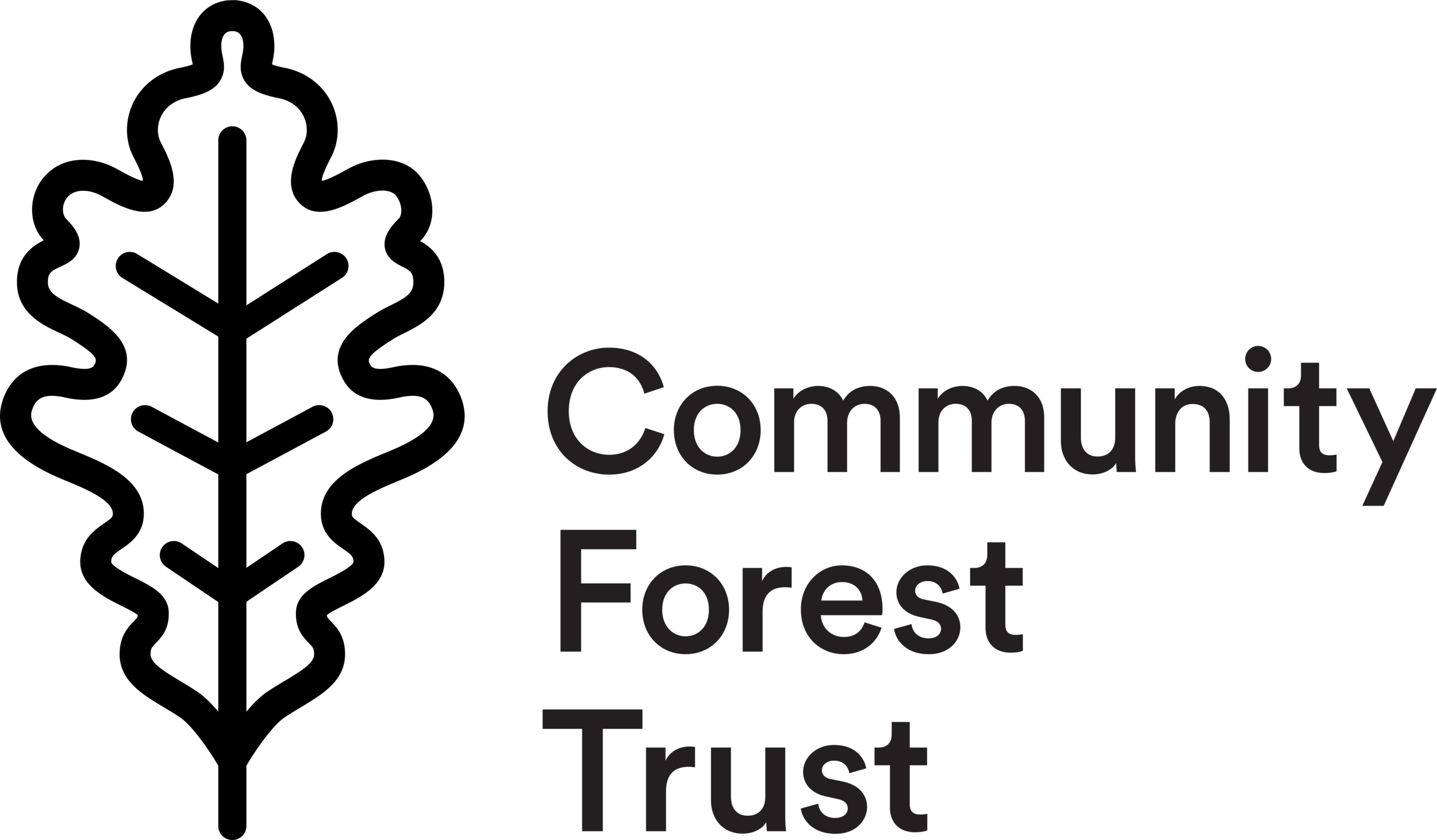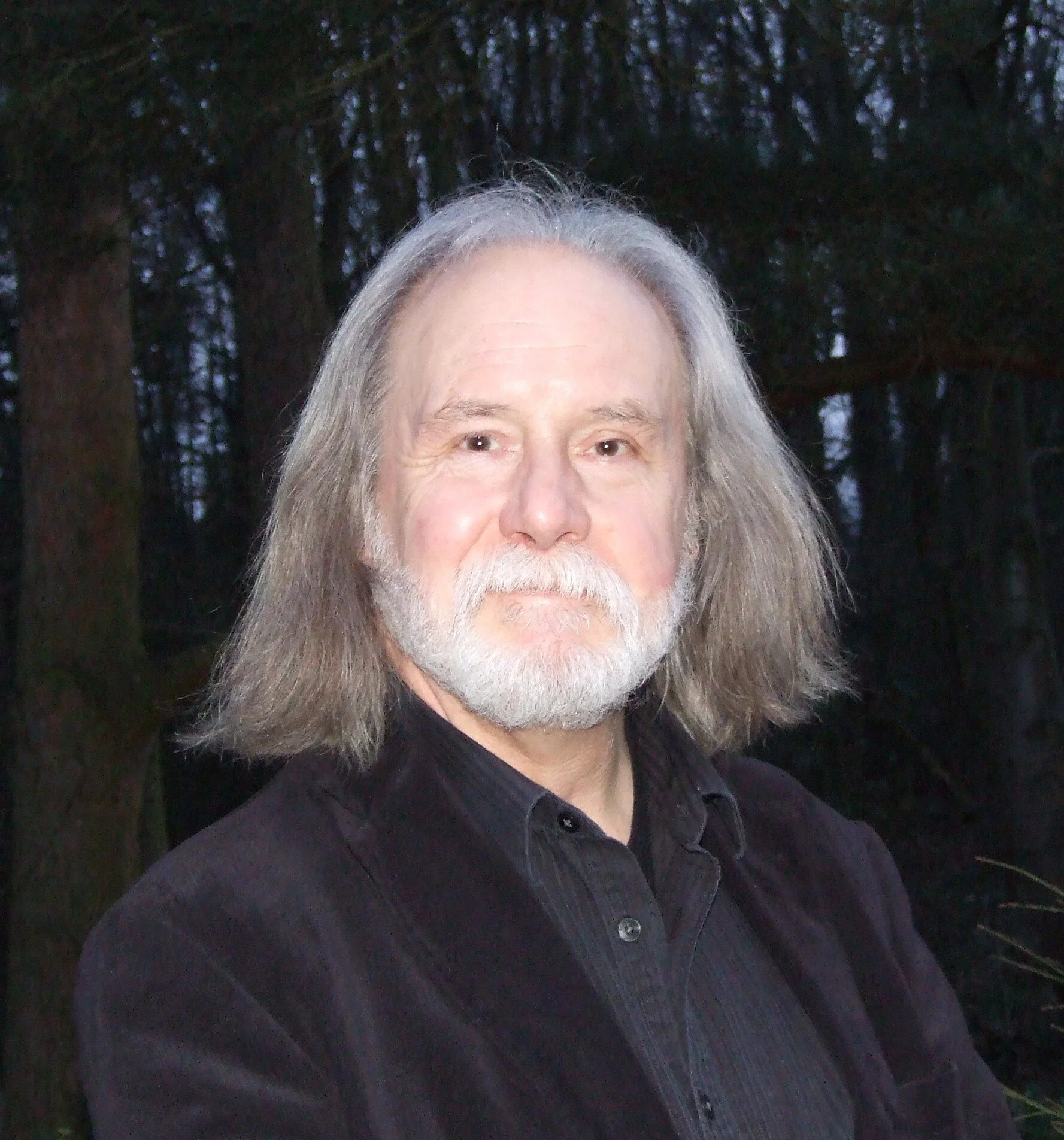Introducing Tree Talk with... Alan Simson
Alan is Professor of Landscape Architecture and Urban Forestry at Leeds Beckett University, Chair of the White Rose Forest and a Member of the International Committee European Forum on Urban Forestry, he’s also a Trustee of the Community Forest Trust.
I have always loved trees, but when I left school, I was going to be a musician…
How did you become involved in the world of community forestry?
A long story, but I’ll keep it shortish, well sort of…
I have always loved trees, but when I left school, I was going to be a musician, which I was for a while, being part of a band that played small gigs in pubs around North London. We didn’t make any money of course, but although I lived in Kenton at the time, I took a job in the Forestry Section of Watford Borough Council.
One day, the governor came down to the nursery where we were based and said ‘We’re going to plant trees along the High Street – does anyone want to help?’ - ‘Yes!’ said I, and so I was whisked up to his office, where we worked closely with Civic Trees in selecting and planting the street trees - most of which are still there some 50 years later!
I enjoyed the work so much that I decided that I wanted to be a forester. The governor said ‘No you don’t. You don’t realise it, but you’re a designer, and should train to be a landscape architect.’ I didn’t know what that was, but found out and decided to leave London for a while to study landscape architecture at Leeds Polytechnic – as it was then.
One of the tutors there, a Dutch lady called Griet Terpstra was of great help to me, and greatly encouraged me to concentrate on the planning, design, establishment and the prospective management of trees. Once qualified, she also helped me to get a job with Telford New Town Development Corporation.
I was put in charge of running what then was called the Afforestation Programme… planting over 6.5 million trees of 138 different species in the process. We were the first town in the UK to be awarded FSC certification.
That was the start really, as I was put in charge of running what then was called the Afforestation Programme. I did this for some 11 years, planting over 6.5 million trees of 138 different species in the process. We were the first town in the UK to be awarded FSC certification and the work attracted quite a lot of interest from towns in Europe.
After the New Towns closed down, I was in private practice for a while, including my own, but decided to apply for a lecturing job back at Leeds Poly, which I got. All went well, and much of my teaching included trees, especially urban trees.
One day I was contacted by folk from the University of Copenhagen, who invited to contribute to a meeting being held in Copenhagen to consider whether a COST Action research project should be submitted to the EU to research and develop the concept of urban forestry in Europe, rather than continuing to rely on American research. They wanted to use my work at Telford as a case study.
We wrote the draft COST Action, submitted it to the EU, and it was approved as COST Action E12 Urban Forests and Trees. The UK Government signed up quickly, and surprisingly the Department of the Environment asked me if I would be prepared to lead the COST Action on behalf of the UK, which of course I did.
It was a 5 year project, which ran from 1997 – 2002, and at the same time, we also set up the European Forum on Urban Forestry in 1998 in Wuppertal, Germany. I drew up a UK Team to do the business, which included Nerys Jones, the then leader of the National Urban Forestry Unit (NUFU).
In 1998, Nerys came up with the idea of setting up a West Yorkshire Regeneration Initiative, to encourage regional economic investment and promote human health and well-being through environmental improvement, in particular through the planting of trees.
The idea was taken up, ‘refreshed’ and subsequently launched on Yorkshire Day 1st August 2000 as the White Rose Forest. I was elected as Chair, and have remained so ever since.
The White Rose Forest has now expanded to include North Yorkshire, and thus is now the largest Community Forest in the UK, covering an area of some 9424 km².
I also work with the UN’s FAO on urban forestry matters.
What are your future hopes for trees and forestry?
Trees, woodland and forestry are fast climbing up the political agenda, and they are also increasingly being appreciated by the general public for the huge range of benefits that they bring to our health and well-being, especially after the issues we have all faced during the pandemic.
My hopes are therefore that trees will not now be seen just as a ‘cosmetic’, something to ‘green’ the places where we live, love, work and play, but be recognised as a ‘metaphysic’ – a first principal of such places.
Trees, woodland and forestry are fast climbing up the political agenda and they are increasingly being appreciated for the huge range of benefits that they bring to our health and well-being.
What are you most excited by currently in the world of community forestry?
I’m most excited by the current expansion of the community forests, but especially the fact that they are not just imposed on communities, but actually involve such communities in the planning, design, establishment and even management of ‘their’ woodlands.
Working with schools and young people is particularly important, as is the difficult activity of coming up with schemes that can retro-fit our areas of dense housing to make them worth living in. Governance is also changing. It used to be governance by the powers that be; then governance with the powers that be and will eventually be governance without the powers that be. Community Forestry can greatly assist this in matters of trees and green space in general.
What do you think will make the biggest difference in the next 5 years?
The two things that I think will be making a difference over the coming years will be climate change and the pests and diseases that are affecting our trees. Both issues will influence the species of tree that we plant, and thus convincing communities that we cannot continue to just plant native species anymore.
We have to broaden the spectrum of the species that we plant so that they are resilient – ready for anything, something that isn’t always an easy idea to sell to folks.
Do you have any recommendations for anyone who would like to get more involved in community forestry in their local area?
Obviously if you live in an area that has its own Community Forest, get in touch with them. Many Community Forests are now revamping their websites to communicate better to the general public, and so getting in touch will be easier.
If you don’t live in a Community Forest area, there are a number of other organisations who are carrying out tree planting, such as your local Wildlife Trust, the Woodland Trust, etc., who would welcome your interest and involvement.
Where do you enjoy going for a walk and do you have any recommendations for fab places that people can experience woodlands?
Locally to where I now live (Skipton), the woodlands that form part of the Bolton Abbey Estate are wonderful. To those who know, they’re well-managed, but that isn’t obvious to those who don’t, thus the ‘natural’ experiential qualities are great.
Closer to where I used to live once upon a time, Epping Forest on the eastern edge of London also provides high experiential qualities, which I still nip down to visit from time to time.
Do you have a favourite tree?
Yes several, but I’ll limit it to two.
My first favourite tree is Ronsak, an ancient pollarded timelord oak tree that lives in a place called Acton Round, near Bridgnorth in Shropshire. I knew it from an early age, as it’s where my Mother’s family came from.
It wasn’t until I was interested in trees however, and started researching into the area, which has lots of ghosts in the landscape, that I discovered that the tree had been a boundary tree between two parishes, and in a plan dated 1265, it was graphically located and called Ronsak.
My second favourite is the Ankerwycke Yew, another ancient timelord tree growing on the north side of the River Thames at Ankerwycke, a small place to the west of Windsor. It’s where Magna Carta was allegedly sealed by King John and a band of barons back in 1215.
Although history tells you that this happened at Runnymede, in fact it didn’t. In the 13th century, the River Thames was a braided river, and it wasn’t made into a single channel until the 15th century.
The yew grew on a small island in the middle of the river, and had a priory next door to it that belonged to one of the neutral barons, and thus was neutral ground for the King to seal the charter. Runnymede is on the south side of the river. The yew was also where Henry VIII and Anne Boleyn met up and ‘courted’, as it isn’t far from Windsor Castle.
The yew was re-discovered by a colleague when a group of us were researching ancient yew trees, their location and their history some 40 years ago.
At 2,500 years old, the Ankerwycke Yew is the National Trust's oldest tree - you can discover more about the Ankerwycke Yew on the National Trust website.
Prof. Dr. Alan Simson, PhD, FLI, MArborA, MCIOH, AoU, MISHS is Professor of Landscape Architecture + Urban Forestry at Leeds Beckett University, Chair White Rose Forest, Member International Committee European Forum on Urban Forestry.
You can find out more about the White Rose Forest on their website





